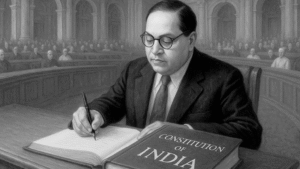Best Pension Plans for Government and Private Employees in India
Introduction
Planning for retirement is crucial for financial stability in old age. In India, both government and private employees have different pension schemes tailored to their employment sector. While government employees enjoy a structured pension system, private employees rely on contributory and voluntary pension plans. In this blog, we will explore pension options available for both categories, compare their benefits, and analyze which is better.
Pension Plans for Government Employees
Government employees in India have access to secure and structured pension plans that provide a fixed income after retirement. These plans are regulated by the government, ensuring stability and financial security.
1. Old Pension Scheme (OPS) [For Employees Who Joined Before 2004]
The Old Pension Scheme (OPS) was the traditional pension system for government employees before 2004. It provided a fixed monthly pension based on the last drawn salary. Under OPS, the pension amount was calculated as 50% of the last drawn basic salary plus Dearness Allowance (DA). The biggest advantage was that the government fully funded this scheme, making it highly secure and inflation-proof with periodic increases.
2. National Pension System (NPS) [For Employees Who Joined After 2004]
In 2004, the Indian government replaced OPS with the National Pension System (NPS). Unlike OPS, NPS is a contributory pension scheme where employees contribute 10% of their salary, and the government contributes 14%. The funds are invested in market-linked instruments, and the returns depend on the performance of these investments. Upon retirement, an employee can withdraw 60% of the corpus as a lump sum, while the remaining 40% must be invested in an annuity plan to receive a monthly pension.
3. General Provident Fund (GPF)
Government employees are also eligible for the General Provident Fund (GPF), a savings scheme where employees contribute a part of their salary every month. The government offers a higher interest rate than the Employees’ Provident Fund (EPF) available for private employees. The accumulated funds can be withdrawn as a lump sum after retirement.
4. Employees’ Pension Scheme (EPS) Under EPFO
For government employees earning below ₹15,000 per month, the Employees’ Pension Scheme (EPS) provides pension benefits after retirement. Employees must have at least 10 years of service to qualify. The pension amount depends on the last drawn salary and years of service.
5. Gratuity Benefits
Government employees who complete at least 5 years of service are eligible for gratuity benefits, which provide a lump sum amount upon retirement. The amount is calculated as (Last drawn salary × 15/26 × Number of years worked). The maximum limit for gratuity is ₹20 lakh.
Pension Plans for Private Employees
Unlike government employees, private sector employees do not have a fixed pension system. They must rely on contributory and voluntary pension plans to secure their retirement.
1. Employees’ Provident Fund (EPF) & Employees’ Pension Scheme (EPS)
The Employees’ Provident Fund (EPF) is a mandatory savings scheme for employees working in private organizations with 20+ employees. In this scheme, 12% of the employee’s salary is contributed to EPF, with the employer making a matching contribution. A portion of the employer’s contribution goes into the Employees’ Pension Scheme (EPS), which provides pension benefits after 10 years of service.
2. National Pension System (NPS) [Voluntary for Private Employees]
Private employees can voluntarily invest in NPS, which allows them to accumulate wealth for retirement through market-linked investments. They can contribute regularly and withdraw 60% of the corpus at retirement, while 40% must be invested in an annuity plan for monthly pension benefits.
3. Corporate Superannuation Plans
Many private organizations offer corporate superannuation plans to their employees. These pension schemes are managed by insurance companies, and contributions are made by the employer. At retirement, employees can use the accumulated amount to purchase an annuity plan, which provides a regular pension.
4. Private Pension Plans from Insurance Companies
Private employees can also invest in individual pension plans offered by insurance companies. These include:
- Immediate Annuity Plans (e.g., LIC Jeevan Akshay VII, SBI Life Saral Pension) – Provide a pension immediately after investment.
- Deferred Annuity Plans (e.g., HDFC Life Click2Retire, ICICI Pru Easy Retirement) – Require contributions over a period, and pension starts after retirement.
- Unit-Linked Pension Plans (ULPPs) – Market-linked plans offering higher returns but with investment risks.
5. Gratuity Benefits
Similar to government employees, private employees are also eligible for gratuity benefits if they complete 5 years of service in a company. The amount is calculated in the same way as for government employees.
Which Pension System is Better?
Government employees have a clear advantage when it comes to pension benefits. Here’s why:
- Guaranteed Pension – Government employees, especially those under OPS, receive a fixed pension amount that increases with inflation. In contrast, private employees must rely on market-based investments, which carry risks.
- Higher Employer Contribution – Under NPS for government employees, the government contributes 14%, while in the private sector, employer contributions vary and may not be as high.
- More Financial Security – Government pensions are inflation-adjusted and come with benefits like Dearness Relief (DR), whereas private employees depend on investment returns, which may fluctuate.
- GPF vs. EPF – Government employees have GPF, which offers a higher interest rate than EPF, providing better savings.
For private employees, the best strategy is to invest in multiple pension schemes such as NPS, EPF, and private annuity plans to ensure financial security in retirement.
Final Verdict
While government pension plans provide better financial security and stability, private employees can still build a strong retirement fund with the right investment strategy. If you are in the private sector, it’s crucial to start investing early in pension plans like NPS, EPF, and ULPPs to ensure a comfortable retirement.
Would you like help in selecting the best pension plan based on your income and retirement goals? Let us know in the comments!
Important Links:
Share this content:











Post Comment